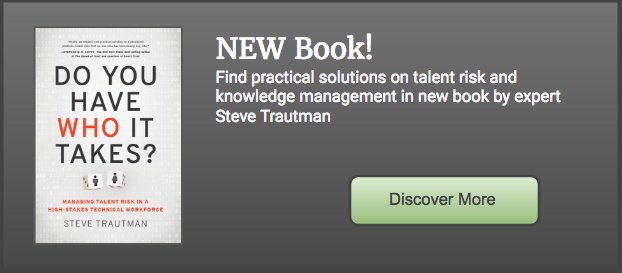Change is inevitable, but it doesn’t need to slow you down. In this post, I’ll explore ways to teach workers how to do their jobs or new functions after a strategic or organizational change. Perhaps more importantly, I’ll also share how you can test that your employees have absorbed the learning clearly and consistently. But first, let’s talk about how change management normally goes wrong.
Typically, when you teach somebody how to do a new or changed job, you explain their role and tasks and you put them to work. Then they screw it up—because they don’t really know what they’re doing—and once you find out, you correct them. You clean up their mess, explain their job further, and you put them back to work. Then, they screw it up less. So, you correct them again—because they still don’t know their job—you clean up a smaller mess, and you teach them again. And so on—with them screwing up a little less, and you re-teaching a little less—until the person becomes able to work independently and correctly according to the change vision.
The problem with this default process is that it takes a long time and it’s expensive. It can also get frustrating for everyone involved, stymie the needed change, and lead to loss of talent and productivity. Why go through all that when there’s a better way?
Tools in the field of knowledge transfer have proven time and again to offer a quicker and clearer solution that helps leaders implement change.
At the Steve Trautman Co. we say: “Teach them—and then interrupt the process.” Teach your employees on the job how to do their new or changed roles and then TEST them through a discussion framed by a series of simple questions. If they pass the test, put them to work using that technical or professional skill. What you’ll find is that when they go to work, they will make few mistakes. And you’ll have to correct them less and clean up less mess. Then when you reteach them, you’ll be just fine tuning. In other words, with a knowledge transfer process and tools, the cycle from “I don’t know” to “I know” is shorter.
Skill Development Plan: A Tool to Transfer New Skills & Knowledge
At the Steve Trautman Co. our work is generally broken down into a 3-Step Talent Risk Management process, which you can read more about here. In the first two steps, you assess where your talent risks are in regards to your organizational change, and align your leadership around how you will prioritize mitigating those risks.
Once you have your highest priorities and risks identified, you move to step 3: creating a plan to grow the needed skills and bench strength within your team. We call this the Skill Development Plan (SDP).
The SDP is a custom, date-driven inventory and schedule of skills and knowledge that must be learned in a given job—and the resources available and test questions needed to confirm that knowledge of the right way to do a job has been transferred.
First, we list the skills relevant to the changed role. (A skill is defined as something someone can “do” as opposed to just “know” and can be explained by a qualified mentor in about 1 hour.) We then sequence the skill list in order of importance, list resources for learning each skill (e.g. documentation, online training), and identify test questions to assess whether the person has learned the skill.
We’ve worked hard over the last couple of decades to devise a simple, quick verbal test that shows whether an employee is ready to do new work. The result is a set of knowledge transfer “test questions” that are adept at checking for the wisdom and tacit knowledge behind any task. We can help your mentors choose five appropriate test questions from our larger set to assess an apprentice’s readiness, and then affix a date by which the apprentice should be able to correctly answer each skill’s test questions. This produces a clear, structured, and measurable plan for teaching employees the changed behaviors you expect to see in a job.
But a clear plan is not enough.
Knowledge Transfer Workshop: Help Your Team Act on the Plan in the Day-to-Day
Envisioned change usually breaks down at the point when you put your plan into action in a real-life, busy, work environment. Just because someone is an expert at what they do and understands what’s expected of them on the road ahead does NOT mean they know how to teach this to others.
Your experts need to learn how to be on-the-job mentors—and any good knowledge transfer process will include this step. The Knowledge Transfer Workshop (KTW), provides 15 proven techniques to transfer an expert’s information, know-how, and tacit knowledge to their apprentice coworkers—while the mentor maintains a regular workload. (More details on our KTW here.)
As change managers, we know it’s true that the day your apprentice employees can pass a skill test is not the day they are experts at the job. But we also know that if they can’t pass their mentor’s test, they are going to go screw things up and you’re going to have to correct them and put out fires and clean up messes. Our knowledge transfer process shortcuts that whole learning cycle and typically reduces the ramp up time to productivity in a new role by 50%.
Summary
Successful change management requires a clear, measurable plan for teaching a workforce the changed behaviors you wish to see—and your standard bearers need to understand how to teach their expertise on the job and test that the knowledge was transferred. The tools of knowledge transfer—such as the Skill Development Plan and Knowledge Transfer Workshop—give change managers the process and structure to do this and keep your change on track.

